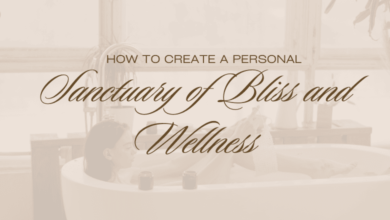The Ultimate Guide To Conquering Fear and Unleashing Your Inner Beast

Everyone has experienced fear at some point in their lives. But some of these unreasonable fears–and phobias–can create seemingly insurmountable barriers to your self-fulfillment. Studies show that nearly 10% of all Americans have a specific phobia. Fear can leave you feeling impotent and weak. It can rob you of a satisfying, meaningful life. Therefore, you should put all your effort into conquering fear one step at a time.
Don’t get stuck in the pitfall of believing you can’t rise above fears and anxieties. Join us in this mega guide on how to cope with your fear and come out a better person.
Where Does Fear Come From?
Before conquering fear, we need to understand where it comes from. At first glance, fear may seem completely irrational and useless. Just an odd chemical reaction in our brains that makes us run away and cry.
But upon closer examination, there is an evolutionary advantage to fear. Long ago, our human ancestors lived a brutal, short life. They hunted wild animals, foraged among poisonous plants and berries, and fought off disease and infection with prayers.
In other words, humans had to be on their guard at all times. Dangers were afoot at every corner. A human that made light of threats would not survive as long.
Over time, the survivors were those who were fearful. They were wary of risks and avoided them at all costs. Thanks to this, Homo sapiens have lived for nearly 100,000 years, with some human ancestors going back much further.
But the world we live in today is not the same as our ancestors. Is fear still a useful evolutionary trait in the 21st century?
The Problem With Fear in the Modern Age
We do still need fear. There are considerable dangers that the average person should be aware of. However, our society is far safer, better equipped, and healthier than ever before.
Modern medicine keeps us hale. Machines prevent us from wearing down our bodies with hard labor. Cities and fences keep us safe from many of the threats nature still poses.
In general, fear is less useful these days than it once was. There’s a reason we have terms for people who are too fearful, such as “scaredy-cat.” People believe, whether consciously or not, that being scared all the time is just silly.
This isn’t to say that you should take big risks and be ignorant of potential threats. But if your fear is crippling you and preventing you from living life to the fullest, something needs to change.
Identifying Your Fear
Before you conquer your fear, you should know what the true source of your fear is. This might seem like a silly question, but it might surprise you how many people don’t realize what they’re really scared of.
So, do some introspection. Identify what the source of your fear is–or is not.
A common example of this is social anxiety. If you have social anxiety, you may show the following symptoms:
- You are uncomfortable in large crowds of people
- You avoid talking to strangers, even if you need to
- You find excuses to head home as soon as you can
- You find yourself trying to escape to quiet places like the bathroom
- You struggle to know what to say when talking to people
- You make excuses for not going out with friends
- You have panic attacks when in public
Many, many people have social anxiety but don’t realize it. They show these fear responses and yet don’t understand what the cause is. Once they do, the ball is in their court about what they do with that information.
So the first step is to analyze your fear responses. What do you think, act, or feel?
Then try to pin that response to phenomena in your environment. It could be a mixture of circumstances and people in different situations.
What Are Other Reactions to Fear?
The above are some common reactions to fear for those who have social anxiety. But let’s discuss some other fear symptoms that you might have:
- Rapid heartbeat, perhaps irregular
- Hyperventilation or fast breathing
- Weak muscles
- Profuse sweating, especially in the palms
- Churning stomach or upset bowels
- Difficulty focusing
- Dizziness or nausea
- Inability to move
- Loss of appetite
- Dry mouth
- Tensing in your muscles, especially in your neck, legs, and hands
All of these are signs that your body is preparing to fight or run. These fear signs are universal and can appear for phobias of all kinds.
Acknowledge and Accept Fear
So you have fears. But a common reaction upon realizing you have fear is denial. Let’s go back to the example of social anxiety.
If you have social anxiety, you may begin to rationalize or deny it. You don’t want to admit that you get anxious in front of people. Instead, you’d rather cling to an explanation–you’re an introvert, or you just prefer your own company.
Take another example: you are a fledgling entrepreneur. You have some great Online Business Ideas, but your fear of failure keeps you from making the dive to execute them. You instead tell yourself that you’re not made for business, or that you just need a better idea.
This only delays any chance you might have had to overcome the fear. It makes you complacent and buries the truth under comfortable fiction.
Acknowledge what your fear is, then embrace it. Don’t feel any shame. Accept that this is just the lot you have been dealt, but remind yourself that you have the power to change.
And that’s the truth: you can change!
Conquering Fear by Facing It
It might seem like a good strategy to avoid your fears. After all, if they aren’t there, they won’t hurt you! But in most cases, you have to deal with everyday fears that you cannot avoid.
If you have social anxiety, you cannot escape people. Even if you work from home, you’ll have to leave at some point to go grocery shopping or visit family. You will have to learn to be comfortable around people, and there’s no getting around that.
So as counterintuitive as it may seem, face your fears. Meet them head-on. You will discover that you do have the power to combat them.
This is called desensitization. The longer you spend around your fear, the less effect it has on you. Many people have effectively killed their phobias by desensitizing themselves through regular exposure.
This is a gradual process that could take months or years. Don’t feel like you need to overcome your fear in a weekend.
Exceptions to This Rule
Naturally, this is not a hard and fast rule. There are certain cases where you should NOT be facing your fears.
A perfect example of this is any fear that relates to PTSD. If you have dealt with sexual abuse–as one type of trauma–do NOT face those fears. Sexual abuse survivors have no reason to confront their abusers or risk future sexual abuse.
That said, there are exceptions even to this rule. A war veteran may have PTSD that makes them terrified of loud, sharp sounds, or piles of garbage that resemble an IED. Letting this PTSD go untreated will prevent you from living a normal life.
These edge cases of PTSD require professional intervention. If you have suffered PTSD or some other extreme form of trauma, contact a therapist. They will give you the tools you need to cope with these phobias.
Changing Your Reaction to Fear
Facing your fears is only half the battle. It won’t be all that effective if you face your fear and exhibit the same symptoms. Instead, you need to recondiiton how you respond to your fears.
Believe it or not, you can change your body’s psychological or physiological response to fear. Over time, you can have an even reaction to fear triggers as you might to anything else.
Breathing Techniques
Your breathing is a core component of your mood. When you are relaxed, you breathe slowly and deeply. But when you are anxious or scared, you have rapid, shallow breaths.
If you can control your breathing, you can mitigate an extreme reaction to fear. This also helps to lower your heart rate and slow your thoughts.
When you start to experience fear, slow your breathing down. Breathe from your diaphragm and fill your lungs all the way before letting the air out slowly. Focus on your breath and nothing else until the anxiety subsides.
Ground Yourself
Grounding is one of many mindfulness techniques. It’s a favorite of therapists who want to help patients overcome anxiety attacks. It’s very effective and requires little practice to master.
In essence, grounding is focusing on your senses. You home in on touch, smell, taste, hearing, and sight. Pay close attention to how these senses make you feel.
Before you ground yourself, you may find that you are stuck in a negative thought train. This thought train is taking you to the future and the past, but not the present. This is the main cause of your anxiety.
To ground yourself, list off the things you feel. Note the color of the sky, the taste of a meal, and the sounds you hear in the background. This focus on the moment takes focus away from your fears.
In short order, you will forget about your fears and instead experience the moment. It’s a powerful technique that many people have had incredible success with.
Replace Negative Self-Talk With Positive Affirmation
They say you are what you eat. They should also say you are what you say you are. The way we perceive ourselves often determines who we become in the end.
If you have fears, there is a good chance there is some negative self-talk that is tied to that. These are those intrusive, negative thoughts in your head that erode your self-esteem. Thoughts where you tell yourself that you’re incompetent, stupid, weak, or any other negative qualifier.
Reversing this stream of negative thoughts is a powerful technique for overcoming anxiety. Since these negative thoughts are so deeply ingrained in your mind, they have become automatic. Changing them to positive thoughts rewires your brain to react positively instead.
Every time you have a negative thought–when scared or not–counteract it with a positive one. If you say “I’m such a baby for being scared of dogs,” say, “I’m an amazing person and I have the strength to overcome this.”
As you practice this on a daily basis, you’ll discover that you have newfound confidence and strength. Since you have been conditioning yourself not to believe negative self-talk, your perception of yourself changes. You’re now able to confront things head-on when before they might have terrified you.
Set Goals and Record Progress
You can’t know how far you’ve come if you aren’t keeping track. Too many people try to face their fears without keeping a record. Just having a journal or app to detail your daily efforts will change everything.
Set small, effective goals for things you want to achieve. For example, set a goal to talk to a stranger this week. If you achieve it, then set a goal for next week to talk to two strangers.
Having this information gives you data on how effective your efforts are. If you fail, you might be able to see why. Then you can try again the next day.
Overcome Your Fears and Unleash the Beast
Conquering fear isn’t just for warriors and high-octane athletes. You can tame unreasonable fears too, one step at a time. If you make it a gradual process, you’ll master your fears and anxieties and unleash your inner beast.
Follow our blog for more lifestyle tips.






